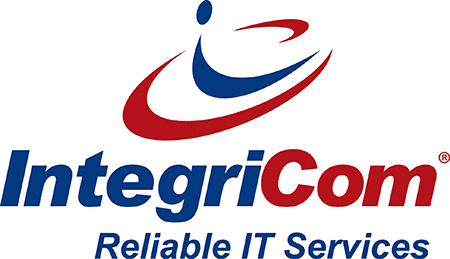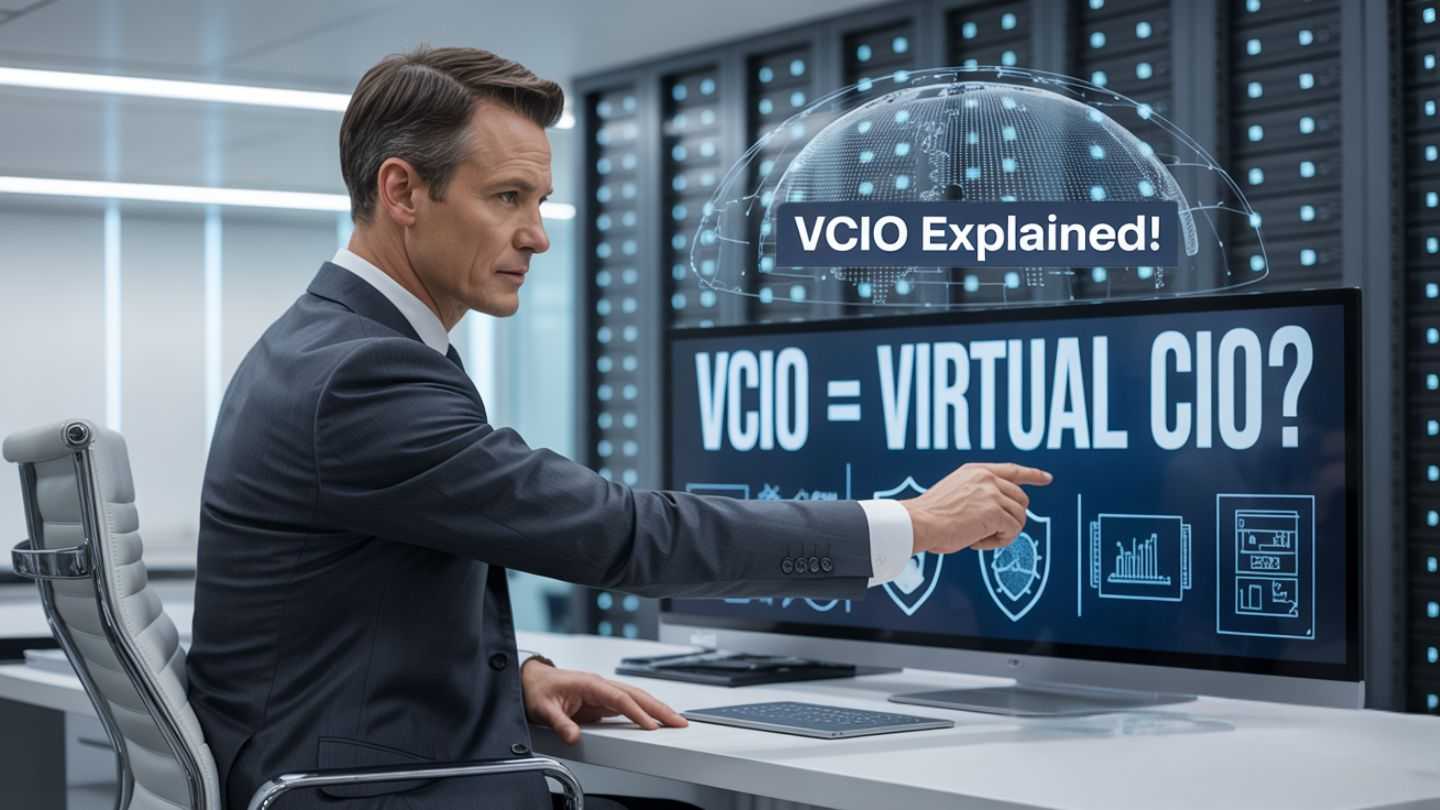A virtual CIO (vCIO) provides the strategic IT guidance every business needs but without the cost of hiring a full-time executive. Operating remotely, a vCIO brings expertise, flexibility, and a fresh perspective that can help businesses align their technology with their goals. In this blog, we’ll break down what a vCIO is, how they work, and why your business might benefit from hiring one.
Key Takeaways
- A virtual CIO is like having an IT mastermind on call. They guide your tech strategy without the costs of an in-house CIO.
- With flexible payment options like hourly rates, retainers, or project-based fees, a vCIO adapts to your business needs.
- From boosting cybersecurity to improving IT infrastructure, a vCIO helps solve even the toughest technology challenges.
What is a Virtual CIO?
Think of a virtual CIO as your business’s outsourced IT director who works remotely. They handle high-level tasks like developing IT strategies, keeping your technology up-to-date, and solving IT headaches before they become disasters. Unlike traditional CIOs who work full-time on-site, a vCIO offers you tailored expertise on your terms.
Key tasks of a vCIO include building IT roadmaps, making technology work for your business goals, and turning IT from a budget-draining cost into a value-adding machine. This role goes beyond fixing IT systems. A vCIO dives into areas like cybersecurity, vendor management, and keeping your business competitive in a world that’s increasingly driven by tech.
Small and medium-sized businesses (SMBs) especially find vCIOs helpful. Why? Because SMBs often don’t have the resources for a full-time executive but still need tailored solutions and strategic advice to grow.
Virtual CIO vs. Traditional CIO
The main difference between a virtual CIO and a traditional CIO lies in how they work. A traditional CIO is a full-time executive, usually salaried, and stationed in the office. Meanwhile, a vCIO operates remotely and is available only when you need them.
Hiring a traditional CIO means committing to a hefty salary and benefits package. By comparison, a vCIO offers financial flexibility. You can choose from payment models such as hourly rates, monthly retainers, or project-specific fees. This lets you get the expertise of a CIO without tying up your budget or making long-term commitments. And since vCIOs are external experts, they bring unique insights and strategies you might not get from someone already embedded in your company.
Benefits of Hiring a Virtual CIO

There are a lot of perks to adding a vCIO to your team.
First off, there are the cost savings. Hiring a traditional CIO can cost anywhere from $218,000 to $515,000 annually (and that’s not even factoring in benefits!). Meanwhile, a vCIO costs significantly less since you’re only paying for the time and expertise you need.
Beyond saving you money, a vCIO helps shape your IT strategy so it supports your overall business goals. They aren’t just tech geeks; they’re strategic thinkers who can turn your IT into a tool for growth. For instance, they can develop cybersecurity plans to protect your business from evolving threats. They can also help you adopt new technologies that improve workflows, cut costs, and increase productivity.
The vCIO’s role isn’t just about tech. It’s about aligning your IT with your vision for the future. Whether you need help picking software, managing IT vendors, or tackling efficiency issues, a vCIO is there to guide the way.
When Should You Hire a Virtual CIO?
Not sure if you’re ready for a vCIO? Here’s a sign to look for: if your IT approach feels reactive (you only fix problems when they happen), it’s time to bring in someone who can create a proactive strategy.
Businesses struggling with issues like overspending on IT tools, weak cybersecurity, or outdated infrastructure will benefit from a vCIO. These experts customize their involvement based on your needs. Whether you need help quarterly or need someone around all year, a vCIO can fit into your schedule and budget.
How a vCIO Handles IT Challenges
Every organization faces unique IT hurdles, but common issues include outdated systems, inefficient workflows, and expensive tech mistakes. A good vCIO helps you identify these challenges and resolve them.
For example, many businesses overspend on unnecessary tools or fail to update their IT systems on time. A vCIO ensures that your tech investments align with your business goals, helping you avoid costly missteps. They also tackle broader problems, such as shifting your IT mindset from reactive to proactive. This means they’ll not only fix today’s problems but also prepare your IT systems for future demands.
IT Infrastructure Management
Your IT infrastructure is the backbone of your operations. A vCIO ensures it’s running smoothly and scales with your business. From improving existing systems to phasing out outdated tech, they help you avoid wasting time and money on inefficient tools.
Their deep IT expertise allows them to streamline your infrastructure while keeping an eye on how it fits into your overall business goals. The result? A system that works, grows, and helps you stay competitive.
Digital Transformation Leadership
Digital transformation can seem like an overwhelming buzzword, but with a vCIO, it becomes manageable. They guide your business through adopting and using new technologies to improve operations and customer experiences.
For small businesses, this might mean transitioning from outdated software to cloud-based solutions or setting up a robust e-commerce system. A vCIO ensures these changes align with your business goals and improve how you serve your customers.
Vendor Relationship Management
Managing relationships with IT vendors can get complicated. A vCIO takes care of this for you by ensuring vendors deliver services that align with your company’s strategy. By effectively negotiating contracts and keeping vendors accountable, a vCIO optimizes these partnerships and ensures you get the most value from them.
Virtual CIO Cost Models
There are three main ways to pay for vCIO services, giving you the flexibility to find an option that works best for your budget and needs:
- Hourly Model: This works like a pay-as-you-go plan. Costs start at $150 per hour and go up based on task complexity. It’s perfect for businesses that need occasional guidance but don’t want long-term commitments.
- Retainer Model: With this option, you pay a set monthly or yearly fee for ongoing support. It’s cost-effective and predictable, though extra charges might apply if you exceed your allotted hours.
- Project-Based Model: For one-off projects, this model charges a fixed fee. It’s ideal for businesses that need focused help with things like system upgrades, migration to new software, or a cybersecurity overhaul.
How to Choose the Right vCIO

Picking the right vCIO is like hiring any executive. Look for someone with a proven track record of aligning IT strategies with business objectives. Their experience in your industry and ability to communicate complex ideas in simple terms are also crucial.
Before hiring, outline your goals and make sure the vCIO’s approach matches your needs. Regularly assessing their contributions ensures they’re delivering value and keeping your IT on track.
Unlock Your Business’s Potential with a vCIO
A virtual CIO offers an adaptable, cost-effective solution for businesses looking to optimize their IT strategy without the commitment of a full-time executive. With expertise in aligning technology with strategic goals, enhancing cybersecurity, and streamlining IT operations, a virtual CIO empowers companies to face technological challenges confidently while driving sustainable growth. For businesses seeking to stay competitive in today’s fast-paced environment, engaging a virtual CIO can transform IT into a robust tool for success.
At IntegriCom, we specialize in providing managed IT services in Lawrenceville, tailored to meet your business needs. Whether you require guidance for a complex IT project or ongoing support to refine your technology strategy, our virtual CIO solutions are designed to bring clarity, security, and efficiency to your operations. Partner with us to ensure your IT not only works for your business but also drives it forward.
FAQs About Virtual CIOs
What is a virtual CIO?
A virtual CIO is an outsourced IT executive who provides strategic guidance remotely. They offer expertise similar to a traditional CIO but without the full-time cost.
How does a virtual CIO differ from a traditional CIO?
A virtual CIO works part-time and remotely, which makes them more flexible and affordable compared to an in-house CIO.
What are the benefits of hiring a virtual CIO?
You’ll save money, align your IT with your business goals, and get customized solutions for cybersecurity, IT infrastructure, and more.
When should a business hire a virtual CIO?
If your IT strategy is more reactive than proactive or you’re facing budget and tech challenges, hiring a virtual CIO can help.
What are the cost models for virtual CIO services?
You can pay hourly, on a monthly/yearly retainer, or project-by-project. Each model adapts to your needs.


